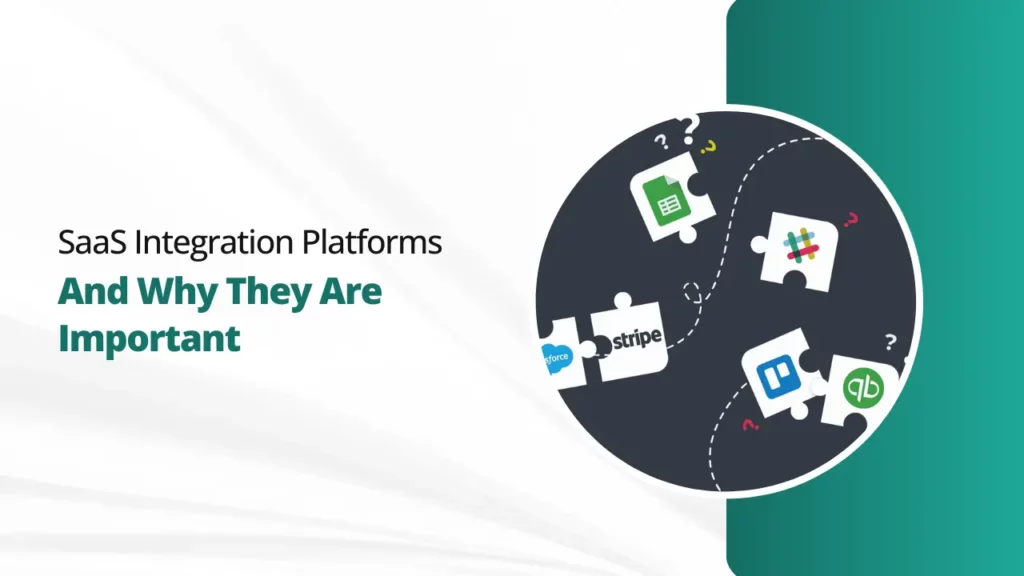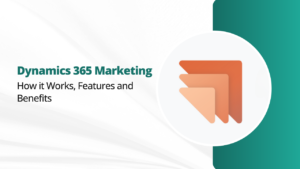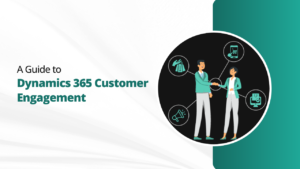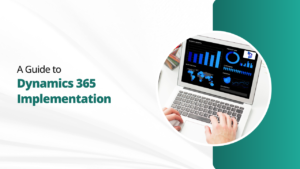Imagine running a business with a marketing team using HubSpot, a sales team on Salesforce, and a customer support team on Zendesk. Each platform holds valuable data, but they’re all isolated. Information gets lost in translation, tasks are duplicated, and your teams feel like they’re working in silos. This is the dreaded data silo problem for businesses using multiple SaaS applications. But fear not! SaaS Integration Platforms (iPaaS) are here to rescue.
SaaS Integration Platforms are the tools that change how organizations interact with their digital ecosystems. This blog is about SaaS Integration Platforms and why they are crucial in business.
What are SaaS Integration Platforms?
An iPaaS, or Integration Platform as a Service, is a cloud-based platform that helps you connect with different applications. It works like a digital bridge, allowing information to flow seamlessly between your various software tools, even if they come from different vendors or are hosted on different platforms (cloud, on-premises, etc.).
Here’s a breakdown of what an iPaaS does:
- Connects diverse applications: It is like a universal adapter that plugs your CRM, marketing automation tool, financial system, email platform, and more into a single network.
- Automates data transfer: No more manual copy-pasting between apps! iPaaS automates data movement, ensuring real-time accuracy and eliminating human error.
- Creates custom workflows: Build automated processes that span multiple applications, like triggering a marketing campaign when a new lead enters your CRM.
- Provides pre-built connectors: Many iPaaS platforms offer pre-built connectors for popular applications.
- Enhances visibility: Gain a view of your business by unifying data from all your connected applications.
- Boosts productivity: By automating tasks, iPaaS frees your team to focus on higher-value activities.
What can you connect with SaaS integration platforms?
You can connect various things with a SaaS integration platform (iPaaS)! The possibilities are vast. Here’s a breakdown of what you can typically connect with an iPaaS:
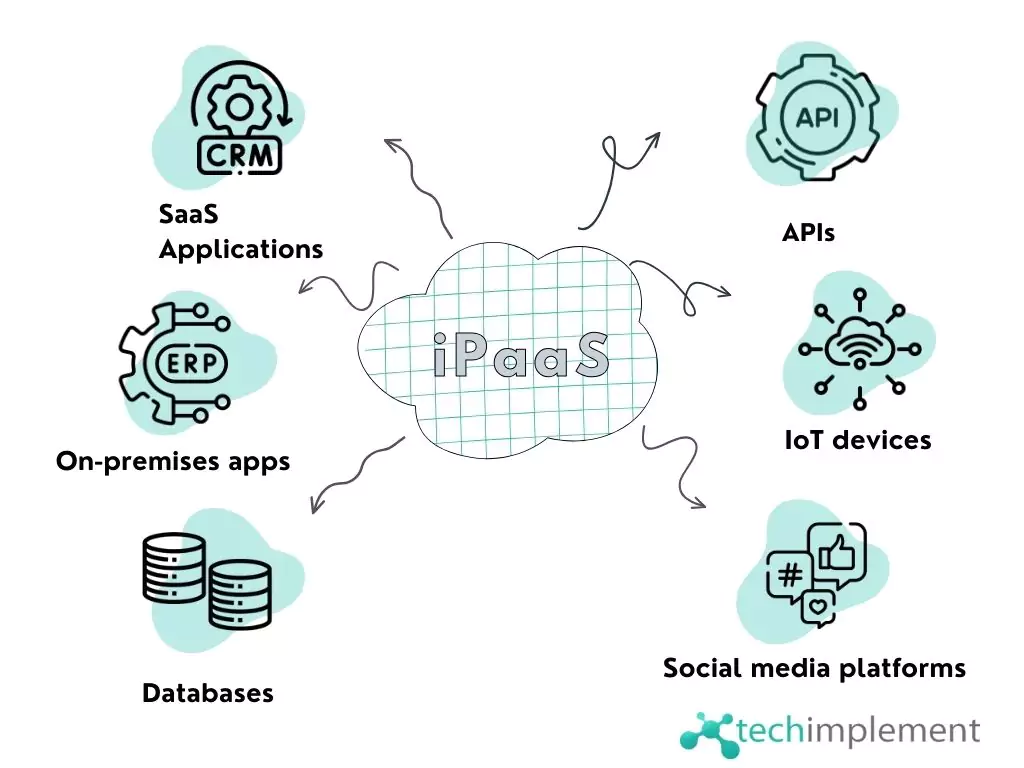
Benefits of SaaS Integration Platforms
Here are some key advantages of SaaS Integration Platforms:
- Data Synchronization Across Systems:
These platforms ensure real-time data synchronization among various software applications. It promotes consistency throughout the organization.
- Break Down Data Silos:
SaaS Integration Platforms break down data silos by creating a unified environment. Information can flow between different departments and systems.
- Rapid Deployment of New Applications:
SaaS Integration Platforms facilitate the quick and efficient deployment of new applications. It provides a standardized framework for integration. This agility is crucial in a fast-paced business environment.
- Real-time Analytics and Reporting:
The integration of data from various sources allows for comprehensive analytics and reporting. Organizations can gain valuable insights that aid strategic decision-making.
- Competitive Advantage:
Businesses that use iPaaS gain a competitive edge by being more agile to market changes. The ability to integrate new technologies keeps them ahead of the curve.
Top SaaS Integration Platforms
Here is the list of highly-rated platforms to help you navigate your options:
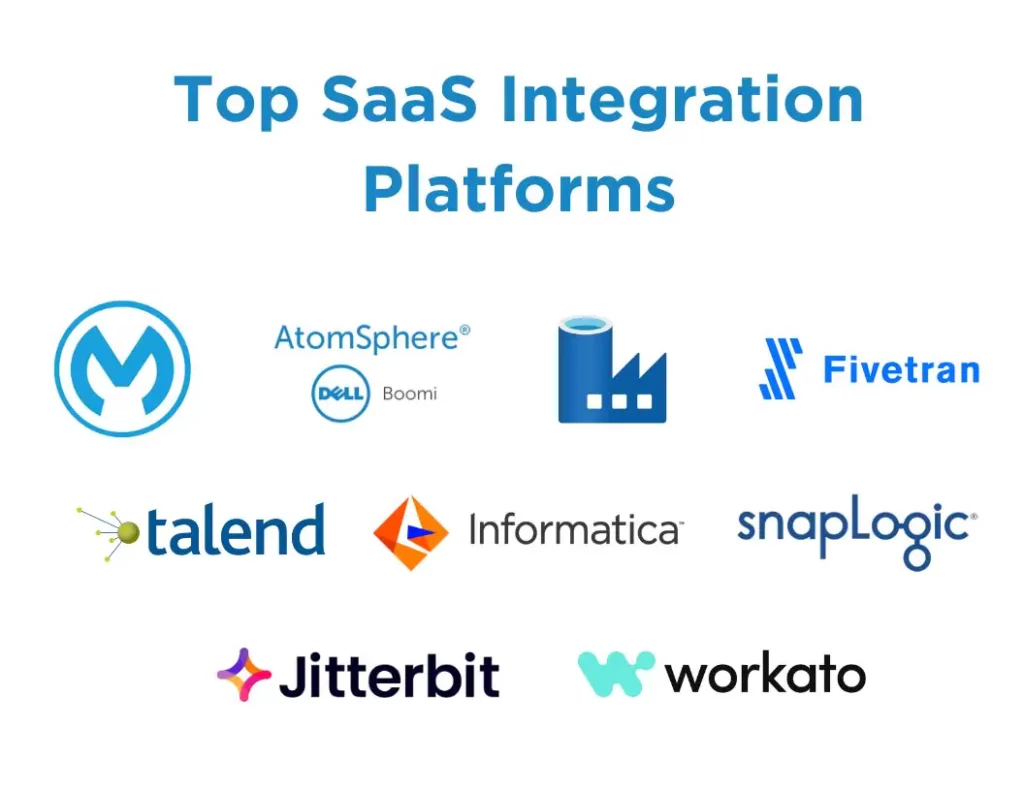
General-purpose iPaaS:
- MuleSoft Anypoint Platform: Powerful, scalable, and known for its API management capabilities. It is ideal for large enterprises with complex integration needs.
- Dell Boomi AtomSphere: User-friendly interface with low-code/no-code features. Suitable for beginners and mid-sized companies.
- Microsoft Azure Data Factory: Tight integration with Azure cloud services. It is ideal for businesses already invested in the Azure ecosystem.
Data-focused iPaaS:
- Fivetran: Focuses on automated data pipelines and real-time data access. Mainly for marketing and analytics users.
- Talend Cloud Data Integration: Strong data governance and quality features. It is well-suited for businesses with strict data compliance requirements.
- Informatica Cloud: Ideal for handling large data volumes and complex data transformations. Perfect for enterprises dealing with big data.
Specialized iPaaS:
- SnapLogic Intelligent Integration Platform: Excel at cloud-native integrations and API-driven architectures. Popular among technology companies.
- Jitterbit Harmony: Geared towards enterprise cloud application integrations. It is known for its pre-built connectors and fast deployment.
- Workato: Emphasizes automation and ease of use. Appealing for non-technical users and businesses new to integration.
How to Choose the Right SaaS Integration Platform
Choosing the right SaaS integration platform (iPaaS) can be overwhelming. To navigate the diverse landscape of iPaaS solutions, here are some critical steps to consider:
1. Define your integration needs:
- What applications do you want to connect to? CRM, marketing automation, email, financial system? Be specific about your current tech stack.
- What data needs to flow between them? Customer leads, orders, financial reports? Clarify the type and volume of data involved.
- What are your desired outcomes? Efficiency gains, data visibility, automation, custom applications? Define your business goals for using an iPaaS.
2. Evaluate your requirements:
- Ease of use: Do you need a low-code/no-code platform or one with more technical complexity?
- Scalability: Will your integration need to grow over time? Choose a platform that can handle future expansion.
- Supported connectors: Does the platform offer pre-built connectors for your specific applications?
- Pricing: Consider your budget and the pricing model offered by different platforms.
3. Research leading iPaaS platforms:
- General-purpose platforms: MuleSoft, Boomi, Azure Data Factory
- Data-focused platforms: Fivetran, Talend, Informatica Cloud
- Specialized platforms: SnapLogic, Jitterbit Harmony, Workato
Note: Their specialties are mentioned above.
4. Request demos and trial versions:
- Get hands-on experience with the user interface and functionalities.
- Test with your specific data sources and applications.
- Compare the platforms based on your requirements and ease of use.
5. Seek trusted advice:
- Consult with IT professionals or integration experts for their recommendations.
- Read reviews and case studies of businesses with similar needs.
- Attend webinars and conferences to learn about the latest iPaaS trends.
How to Implement and Optimize SaaS Integration Platforms
Implementing and optimizing this platform requires careful planning, execution, and ongoing monitoring. Here’s a roadmap to guide you:
Phase 1: Planning and Preparation
- Identify the specific business objectives you want to achieve through iPaaS.
- Create a detailed inventory of all SaaS applications and on-premises systems you want to integrate.
- Review the platform’s features, supported connectors, ease of use, scalability, and security to match your needs.
- Determine the specific data points that need to be exchanged between your applications.
- Define the data mappings, transformations, and workflows for your integrated processes.
Phase 2: Implementation and Deployment
- Set up user accounts, permissions, and security settings.
- Utilize pre-built connectors or develop custom integrations where needed.
- Define data flow paths and ensure data accuracy and consistency across applications.
- Create automated processes that span multiple applications and test them thoroughly.
- Provide training to relevant personnel on using the integrated systems.
Phase 3: Optimization and Monitoring
- Track data accuracy and identify potential issues.
- Analyze usage data and user feedback to identify opportunities for streamlining processes.
- Add new applications and data sources, or expand existing workflows as your business needs evolve.
- Regularly update the platform and applications to stay current with security patches.
- Regularly check for new features and functionalities offered by your iPaaS provider.
Optimize Your SaaS Integration Platform with Tech Implement:
Are you struggling? Do you need help implementing and optimizing the SaaS integration platform? Tech Implement is here for you! We’re your expert partner in optimizing your iPaaS and helping you transform siloed data into integrated success. We have a team of experts to analyze your workflows and streamline data flows. So give us a call and leave the rest to us!
FAQs:
What is integration platform software?
Integration platform software is a tool that facilitates the connection and interaction between different software applications.
What is a SaaS integration platform?
A SaaS integration platform is a software solution specifically designed to connect and integrate various SaaS applications.
What is a SaaS connector?
A SaaS connector is a specialized interface within a SaaS integration platform that enables the smooth integration between different SaaS applications.
How does the SaaS platform work?
A SaaS platform works by providing a centralized environment where different SaaS applications can be integrated to work together.
How do I connect to SaaS?
Connecting to SaaS typically involves using authentication credentials to access the specific SaaS application.

